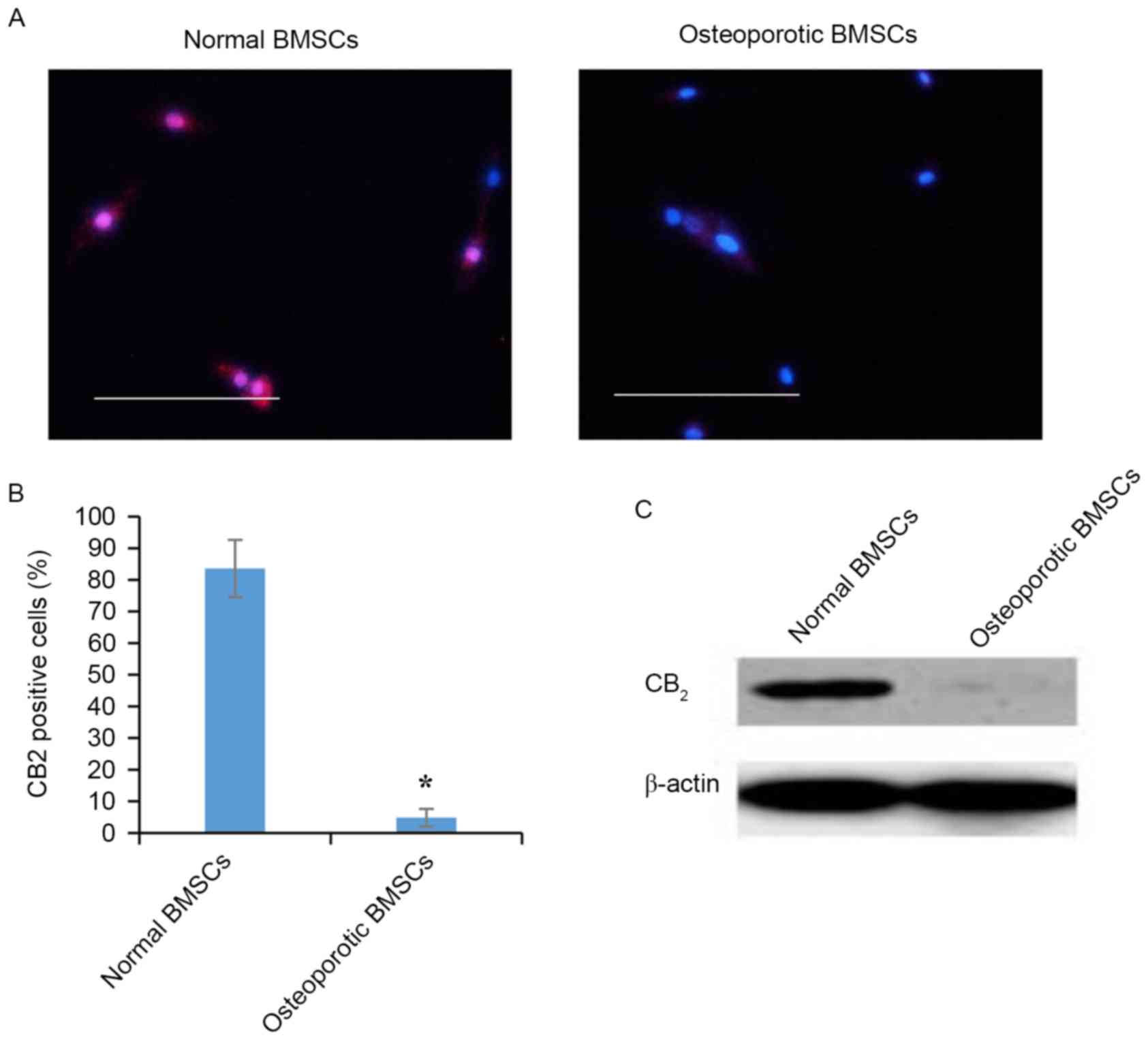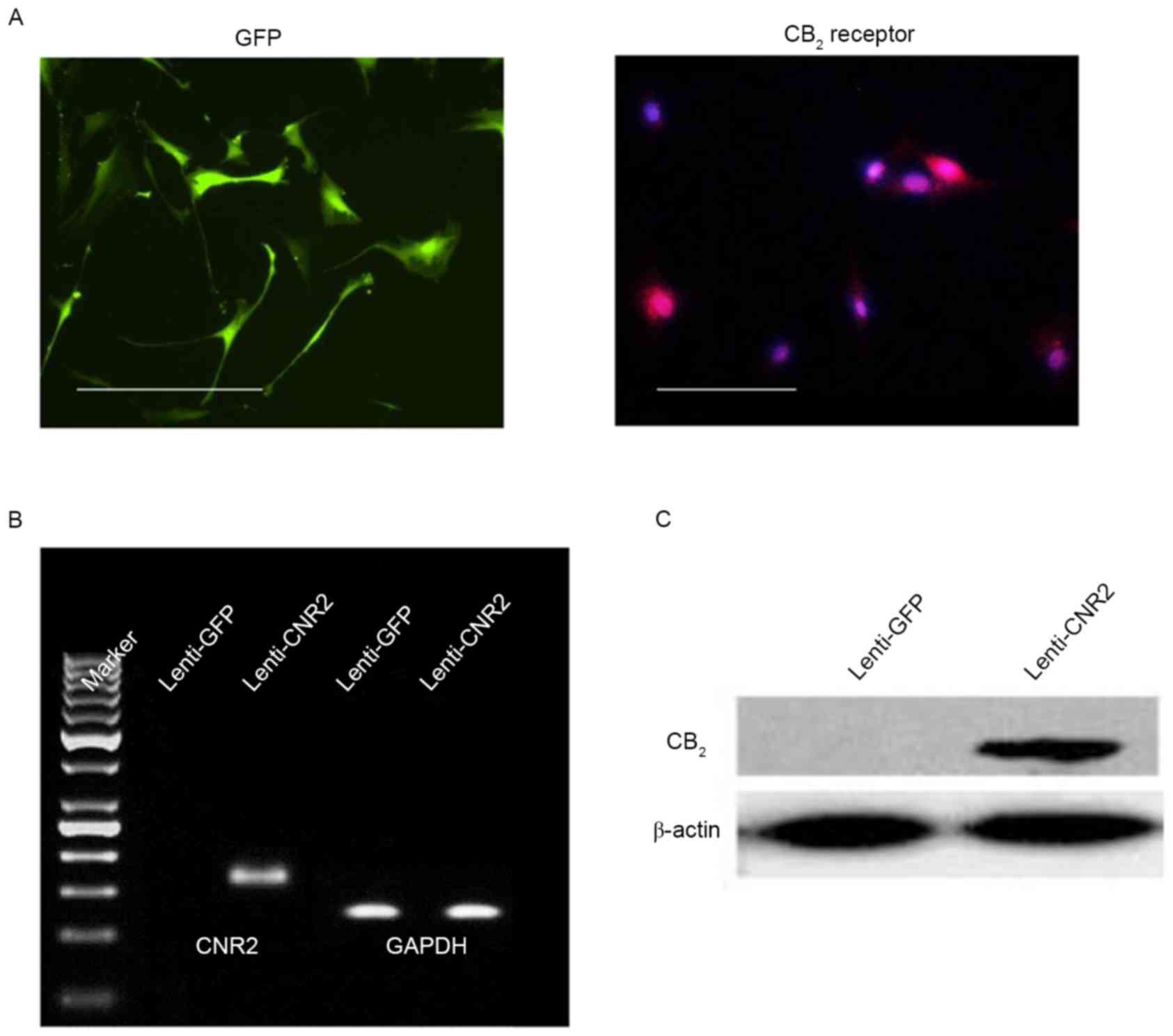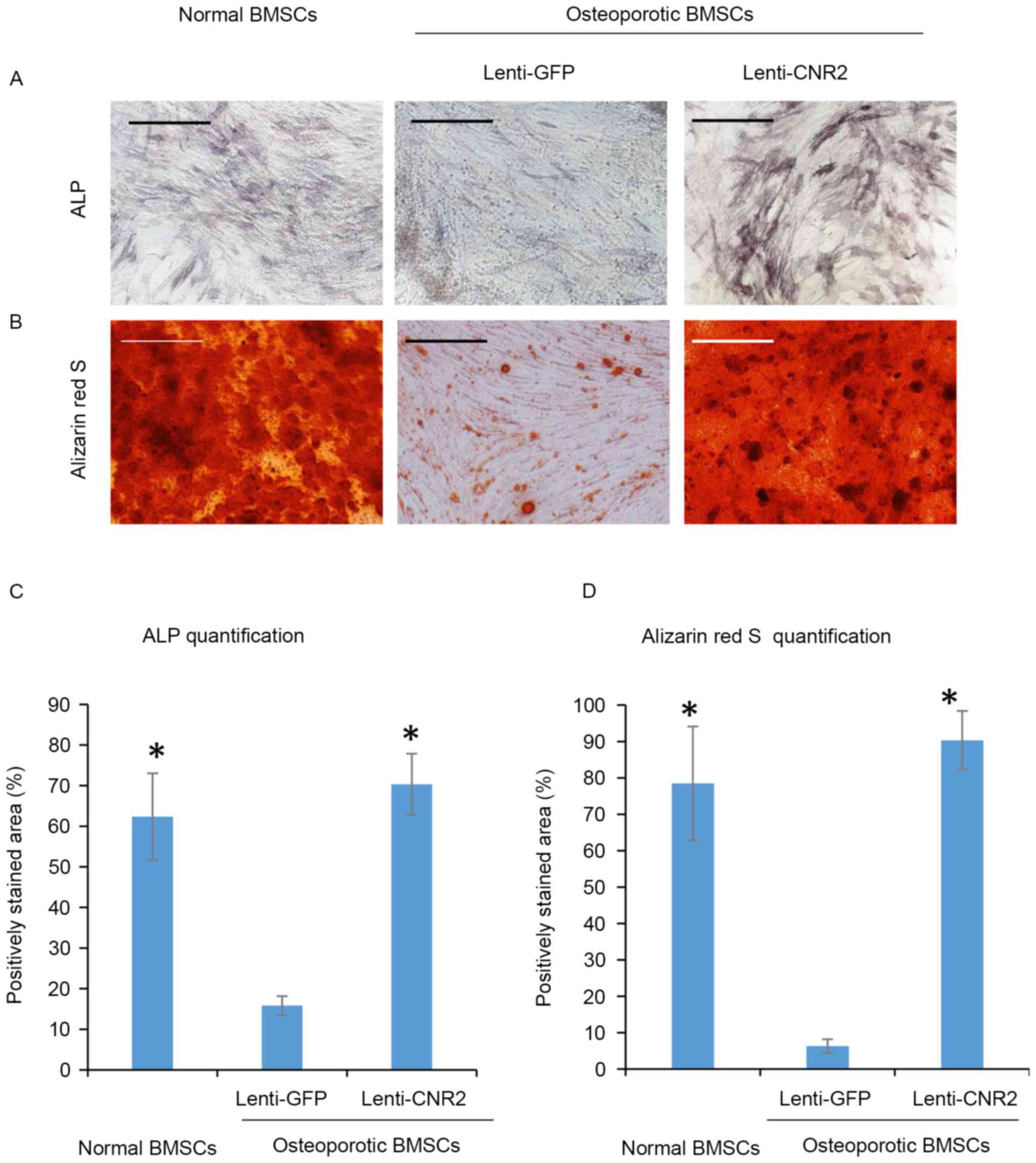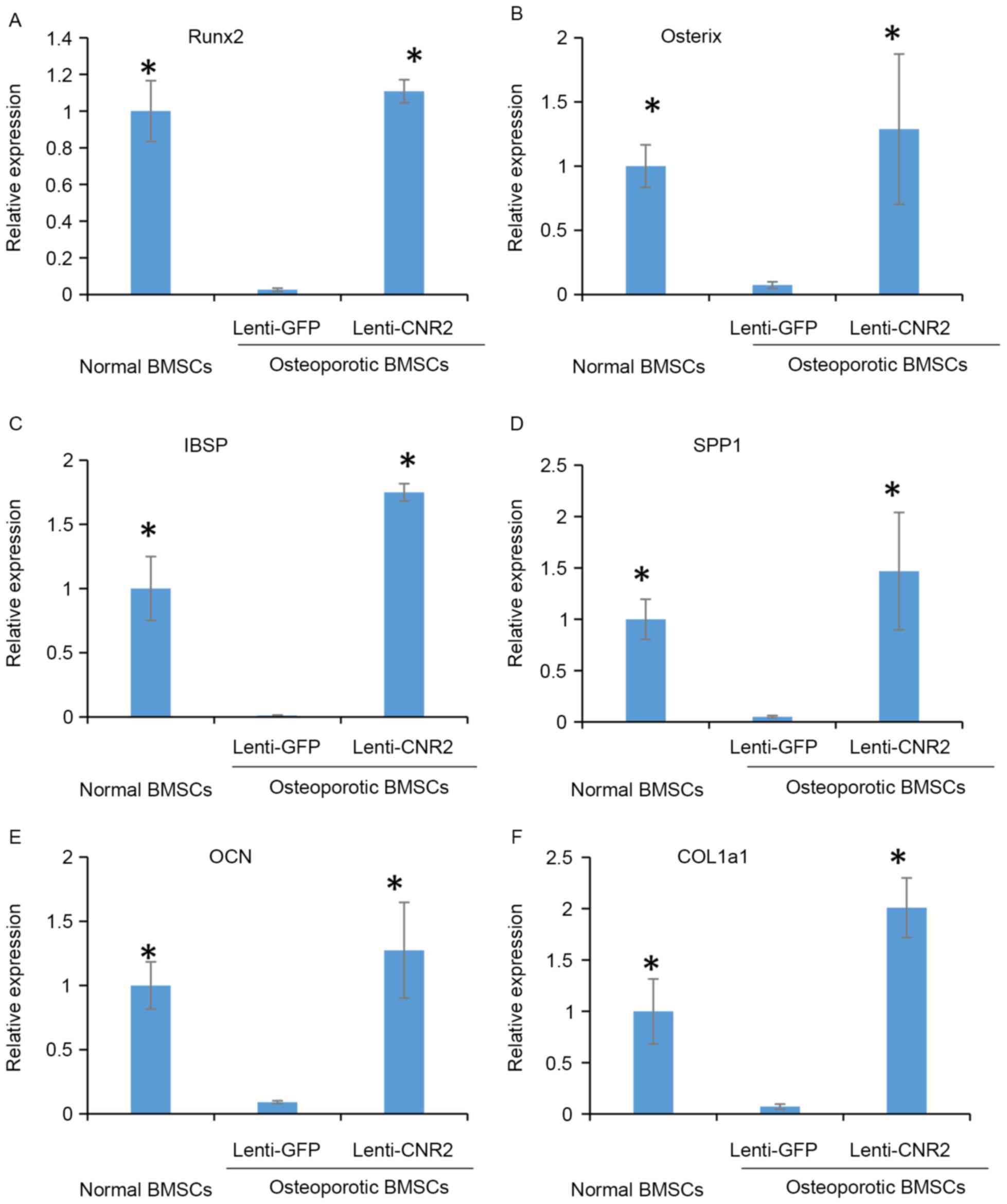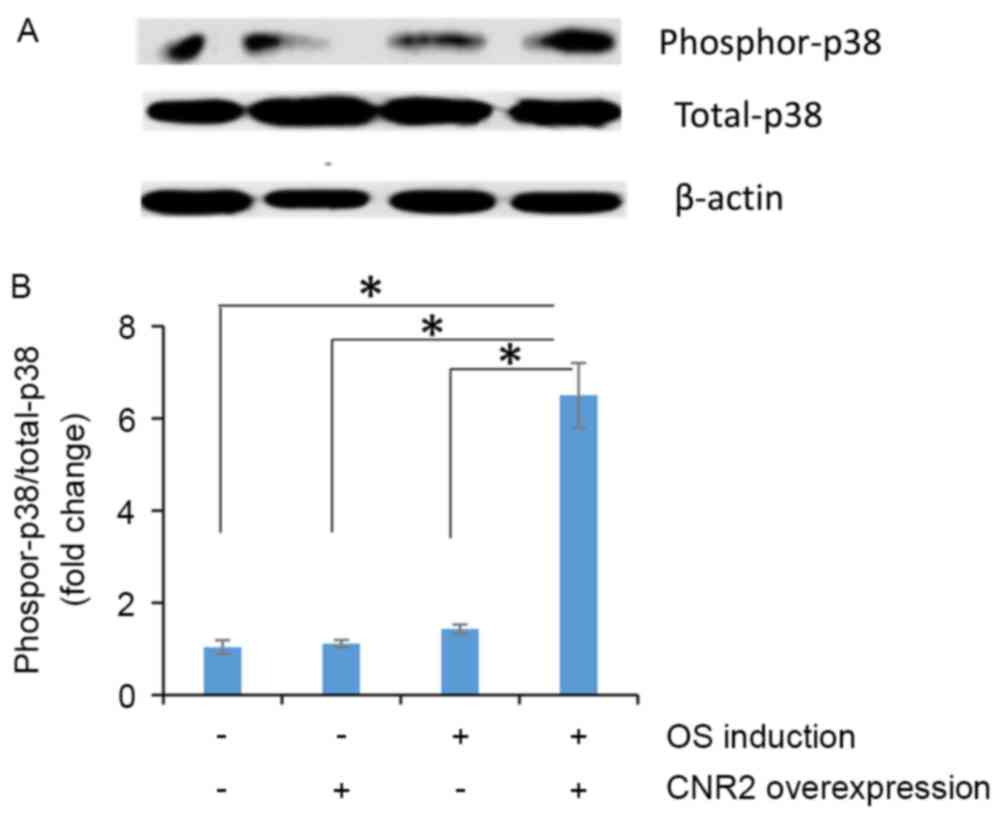|
1
|
Assessment of fracture risk and its
application to screening for postmenopausal osteoporosis. Report of
a WHO study group. World Health Organ Tech Rep Ser. 843:1–129.
1994.PubMed/NCBI
|
|
2
|
Bhutani G and Gupta MC: Emerging therapies
for the treatment of osteoporosis. J Midlife Health. 4:147–152.
2013.PubMed/NCBI
|
|
3
|
Han S, Chen JJ and Chen JZ: Latest
progress in the identification of novel synthetic ligands for the
cannabinoid CB2 receptor. Mini Rev Med Chem. 14:426–443. 2014.
View Article : Google Scholar : PubMed/NCBI
|
|
4
|
Vasileiou I, Fotopoulou G, Matzourani M,
Patsouris E and Theocharis S: Evidence for the involvement of
cannabinoid receptors' polymorphisms in the pathophysiology of
human diseases. Expert Opin Ther Targets. 17:363–377. 2013.
View Article : Google Scholar : PubMed/NCBI
|
|
5
|
Yang P, Wang L and Xie XQ: Latest advances
in novel cannabinoid CB (2) ligands for drug abuse and their
therapeutic potential. Future Med Chem. 4:187–204. 2012. View Article : Google Scholar : PubMed/NCBI
|
|
6
|
Idris AI, van't Hof RJ, Greig IR, Ridge
SA, Baker D, Ross RA and Ralston SH: Regulation of bone mass, bone
loss and osteoclast activity by cannabinoid receptors. Nat Med.
11:774–779. 2005. View
Article : Google Scholar : PubMed/NCBI
|
|
7
|
Ofek O, Karsak M, Leclerc N, Fogel M,
Frenkel B, Wright K, Tam J, Attar-Namdar M, Kram V, Shohami E, et
al: Peripheral cannabinoid receptor, CB2, regulates bone mass. Proc
Natl Acad Sci USA. 103:pp. 696–701. 2006; View Article : Google Scholar : PubMed/NCBI
|
|
8
|
Sophocleous A, Landao-Bassonga E, Van't
Hof R, Ralston S and Idris A: The type 2 cannabinoid receptors
(CB2) protects against age-related osteoporosis by affecting bone
formation and CB2 agonists exhibit anabolic activity in vivo. Bone.
44:S2192009. View Article : Google Scholar
|
|
9
|
Sun YX, Xu AH, Yang Y, Zhang JX and Yu AW:
Activation of cannabinoid receptor 2 enhances osteogenic
differentiation of bone marrow derived mesenchymal stem cells.
Biomed Res Int. 2015:8749822015.PubMed/NCBI
|
|
10
|
Idris AI, Sophocleous A, Landao-Bassonga
E, Canals M, Milligan G, Baker D, van't Hof RJ and Ralston SH:
Cannabinoid receptor type 1 protects against age-related
osteoporosis by regulating osteoblast and adipocyte differentiation
in marrow stromal cells. Cell Metab. 10:139–147. 2009. View Article : Google Scholar : PubMed/NCBI
|
|
11
|
Fernandes H, Dechering K, Van Someren E,
Steeghs I, Apotheker M, Leusink A, Bank R, Janeczek K, Van
Blitterswijk C and de Boer J: The role of collagen crosslinking in
differentiation of human mesenchymal stem cells and MC3T3-E1 cells.
Tissue Eng Part A. 15:3857–3867. 2009. View Article : Google Scholar : PubMed/NCBI
|
|
12
|
Wu L, Wu Y, Lin Y, Jing W, Nie X, Qiao J,
Liu L, Tang W and Tian W: Osteogenic differentiation of adipose
derived stem cells promoted by overexpression of osterix. Mol Cell
Biochem. 301:83–92. 2007. View Article : Google Scholar : PubMed/NCBI
|
|
13
|
Livak KJ and Schmittgen TD: Analysis of
relative gene expression data using real-time quantitative PCR and
the 2(-Delta Delta C(T)) method. Methods. 25:402–408. 2001.
View Article : Google Scholar : PubMed/NCBI
|
|
14
|
Giusti A and Bianchi G: Treatment of
primary osteoporosis in men. Clin Interv Aging. 10:105–115.
2014.PubMed/NCBI
|
|
15
|
Maruotti N, Corrado A, Neve A and
Cantatore FP: Bisphosphonates: Effects on osteoblast. Eur J Clin
Pharmacol. 68:1013–1018. 2012. View Article : Google Scholar : PubMed/NCBI
|
|
16
|
Russell RG: Bisphosphonates: The first 40
years. Bone. 49:2–19. 2011. View Article : Google Scholar : PubMed/NCBI
|
|
17
|
Rudic JS, Poropat G, Krstic MN, Bjelakovic
G and Gluud C: Hormone replacement for osteoporosis in women with
primary biliary cirrhosis. Cochrane Database Syst Rev: CD009146.
2011. View Article : Google Scholar
|
|
18
|
Montagnani A and Gonnelli S: Antidiabetic
therapy effects on bone metabolism and fracture risk. Diabetes Obes
Metab. 15:784–791. 2013. View Article : Google Scholar : PubMed/NCBI
|
|
19
|
Lewiecki EM: Current and emerging
pharmacologic therapies for the management of postmenopausal
osteoporosis. J Womens Health (Larchmt). 18:1615–1626. 2009.
View Article : Google Scholar : PubMed/NCBI
|
|
20
|
Caplan AI: Mesenchymal stem cells. J
Orthop Res. 9:641–650. 1991. View Article : Google Scholar : PubMed/NCBI
|
|
21
|
Dore-Duffy P: Pericytes: Pluripotent cells
of the blood brain barrier. Curr Pharm Des. 14:1581–1593. 2008.
View Article : Google Scholar : PubMed/NCBI
|
|
22
|
Sousa-Victor P, Garcia-Prat L, Serrano AL,
Perdiguero E and Muñoz-Cánoves P: Muscle stem cell aging:
Regulation and rejuvenation. Trends Endocrinol Metab. 26:287–296.
2015. View Article : Google Scholar : PubMed/NCBI
|
|
23
|
Carrió E and Suelves M: DNA methylation
dynamics in muscle development and disease. Front Aging Neurosci.
7:192015. View Article : Google Scholar : PubMed/NCBI
|
|
24
|
Ramirez SH, Haskó J, Skuba A, Fan S,
Dykstra H, McCormick R, Reichenbach N, Krizbai I, Mahadevan A,
Zhang M, et al: Activation of cannabinoid receptor 2 attenuates
leukocyte-endothelial cell interactions and blood-brain barrier
dysfunction under inflammatory conditions. J Neurosci.
32:4004–4016. 2012. View Article : Google Scholar : PubMed/NCBI
|
|
25
|
Adhikary S, Li H, Heller J, Skarica M,
Zhang M, Ganea D and Tuma RF: Modulation of inflammatory responses
by a cannabinoid-2-selective agonist after spinal cord injury. J
Neurotrauma. 28:2417–2427. 2011. View Article : Google Scholar : PubMed/NCBI
|




